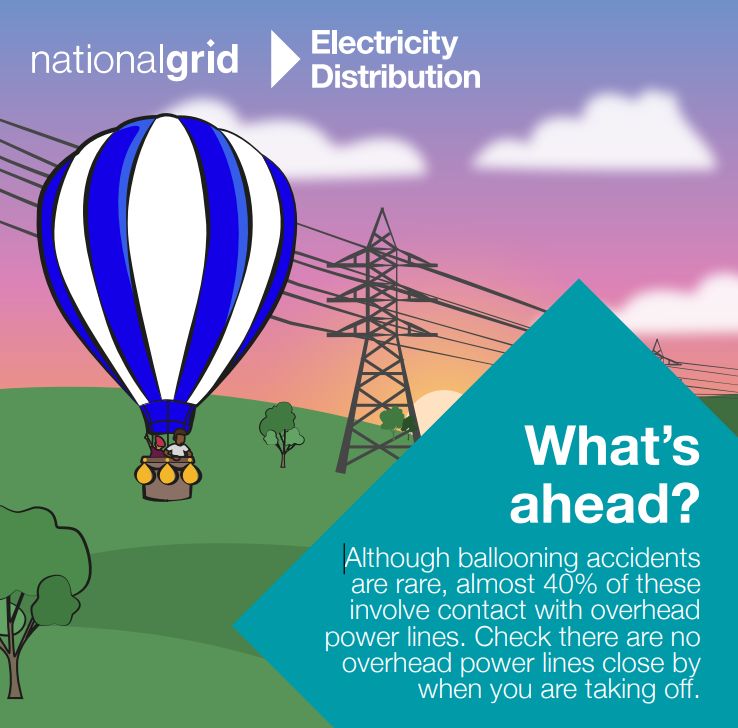Ballooning safety
Ballooning accidents are rare, but almost 40% of those reported involve contact with overhead power lines, resulting in electric shocks, burn injuries and, in some cases, death.
It is important to remember that balloon envelopes, wires, ropes, fuel cylinders, hoses and baskets can all conduct electricity.
Overhead power lines often carry extremely high voltages and are capable of cutting through materials such as balloon fabric like a plasma cutter.


Top 5 tips on ballooning safety
1. Check there are no overhead power lines in the area from which you intend to take off.
2. Make sure you have a pair of binoculars to spot overhead power lines when in flight.
3. Do not fly deliberately close to overhead power lines.
4. Civil Aviation Authority (CAA) maps may show power lines on pylons but don’t show other overhead power lines, such as those supported by wooden poles.
5. If you spot an overhead power line when landing, do not focus on this line exclusively as there may be others.
Reference Guide
- Energy Network's Association 'Safety Information for Balloonists'
- CAA Safety Sense Leaflet 'Balloon Airmanship'
Quick Links
To view our other safety pages please use our quick links below:
Angling safety
Camping safety
Drone safety
Farming safety
Sailing safety
